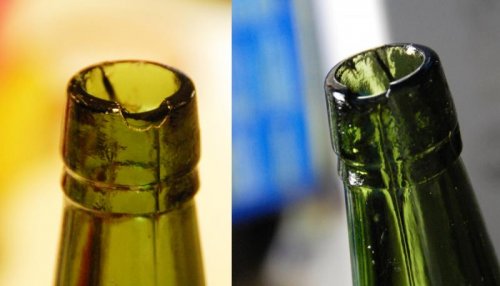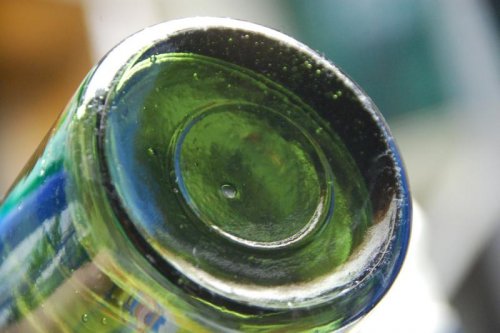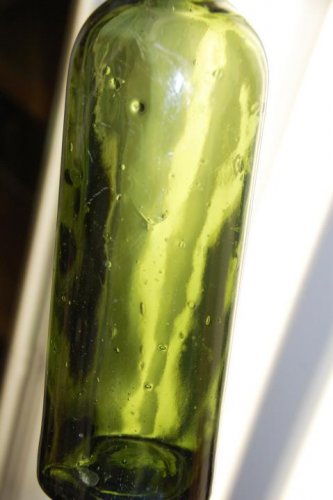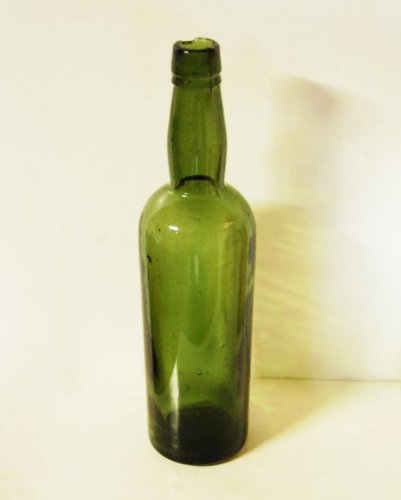You are using an out of date browser. It may not display this or other websites correctly.
You should upgrade or use an alternative browser.
You should upgrade or use an alternative browser.
Bottle Question
- Thread starter Robby Raccoon
- Start date
CanadianBottles
Well-Known Member
- Joined
- May 24, 2014
- Messages
- 4,721
- Reaction score
- 2,430
- Points
- 113
I believe it's made with a very early and crude automatic machine, probably not a genuine Owens machine but something based off that idea. It probably wasn't made in North America, my guess is somewhere in Europe, though it could have been anywhere. I'm pretty sure there actually is a seam of some sort around the base. I think I can see a suction scar in the lower right corner. I don't know much about how bottles are made but it looks to me like it was still a bit gloppy when they took it out of the mold and that's why the seams look so strange.
andy volkerts
Well-Known Member
I believe it is U.K. by the ring on the base, they made sloppy bottles up until the 1930s, I have several cure bottles dating 1920s that look like they were made in the 1860s, except for seam lines........Andy
Robby Raccoon
Trash Digger
Thank you both.
Harry Pristis
Well-Known Member
Looks like a scotch whiskey bottle to me. Cup-bottom or post-bottom mold seams around the base are something you might look for on an earlier bottle. This one is probably WWI era or later.
Bottle machines were around long before Owens patented his machine. Owens just designed one that was superior. This whiskey bottle doen't have the distinctive valve mark from an Owens machine. We just can't say if it was made in a late evolution of an Owens machine or in some Scottish adaptation of such a machine.
Here's how they were making bottles in Scotland at the Alloa Glass Works in 1950. This manufacturing process is probably not much different from that of earlier in the century. https://www.youtube.com/watch?v=8DVSaanSlAI
Bottle machines were around long before Owens patented his machine. Owens just designed one that was superior. This whiskey bottle doen't have the distinctive valve mark from an Owens machine. We just can't say if it was made in a late evolution of an Owens machine or in some Scottish adaptation of such a machine.
Here's how they were making bottles in Scotland at the Alloa Glass Works in 1950. This manufacturing process is probably not much different from that of earlier in the century. https://www.youtube.com/watch?v=8DVSaanSlAI
Robby Raccoon
Trash Digger
I apparently forgot to thank you. My apologies.
So..... Thank you.
So..... Thank you.
Similar threads
- Replies
- 4
- Views
- 3K
- Replies
- 15
- Views
- 3K
- Replies
- 4
- Views
- 1K
Latest threads
-
Killer Dig with Pot Lids and lot of other stoneware!
- Started by RIBottleguy
- Replies: 0
-
-
-
-
-




